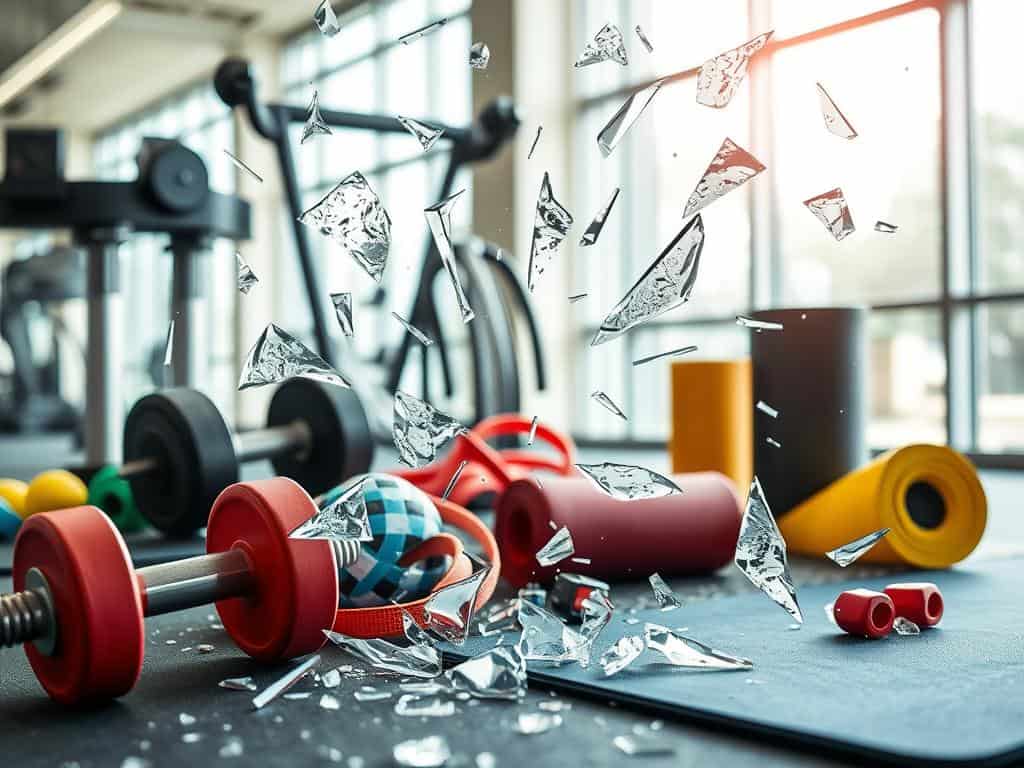Did you know up to 60 percent of top athletes might get overtraining syndrome during their careers? This fact shows how vital it is to spot and tackle overtraining signs early. Overtraining happens when I push my body too hard without enough rest. It can lead to tiredness, lack of nutrients, and a higher chance of getting hurt. Symptoms like muscle pain, lower performance, and mood swings are key signs. They tell me to check my workout habits.
Knowing how overtraining shows up lets me prevent it. By taking days off and eating right, I can recover better from workouts. This keeps me from getting burned out or hurt. These tips help me keep my training well-rounded, leading to greater success.
Key Takeaways
- Overtraining can affect a significant number of athletes, causing fatigue & overtraining.
- Common signs include muscle soreness, mood changes, and an inability to train effectively.
- Proper nutrition and hydration are essential for effective workout recovery.
- Listening to my body and taking rest days can help prevent injuries.
- Recovery from overtraining may take weeks or months, requiring a gradual return to training.
- Maintaining a training log can assist in monitoring progress and avoiding burnout.
Understanding Overtraining and Its Signs
Overtraining is a real challenge in many sports. It happens when you train too much and don’t rest enough. This leads to symptoms that worsen your performance and health.
What is Overtraining?
Overtraining syndrome (OTS) has two parts: overreaching and overtraining. Overreaching is when you’re really tired but can recover with rest. Overtraining is more severe and can hurt you long-term. About 60% of elite runners have faced this issue, and 33% of non-elite female runners too. It’s quite common, especially among competitive athletes.
Signs of Overtraining
It’s key to spot overtraining signs early. If your muscles stay sore after rest, it’s a warning. You might struggle to keep up your usual performance levels, hitting a plateau or dropping. Feeling more tired, moody, or stiff are also signs.
Watch out for issues like bad sleep, weight changes, and getting sick more often. Signs like poor sleep quality, less motivation, and feeling down could mean you’re overdoing it. Keeping an eye on these signs helps avoid serious problems from overtraining. By understanding these symptoms, I can focus on recovering and stay on track with my goals.
Fatigue & Overtraining: Prevention Strategies
To prevent fatigue and overtraining, I need a plan that cares for my body. It’s important to focus on getting enough rest, eating well, and staying hydrated. If I use a good strategy, I can keep performing my best and avoid overtraining.
Listen to Your Body
Noticing when I feel more tired or sore than usual is key. It means I should pay attention. Changing how hard or often I train can help a lot. This way, I avoid pushing myself too hard.
Incorporate Rest Days
Taking days off is essential, not a luxury. I plan breaks to let my body heal. This rest stops injuries and keeps me in top shape.
On easy days, I might go for a gentle walk or stretch. This keeps me moving without going too far.
Nutrition and Hydration
Eating right is vital for my training and recovery. A diet with carbs, proteins, and fats gives me energy. Drinking plenty of water also supports my body’s healing. Staying on top of my diet and hydration protects me from overtraining.

Conclusion
Understanding overtraining signs and using good recovery methods are key to my fitness goals. Up to 20% of athletes in various sports may suffer from Overtraining Syndrome. Knowing this helps me tweak my training to keep performing well without getting too tired or burned out.
My training plan must include enough rest, good food, and lots of water. Especially for endurance athletes who train a lot, recovery is crucial. This way, I stay driven, avoid injuries, and keep enjoying my sports activities.
Looking at fitness in a well-rounded way helps me handle training challenges better. I use smart recovery tools. This not only improves my physical abilities but also supports a sustainable training lifestyle.



